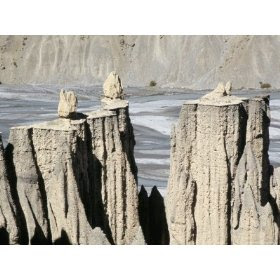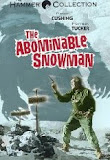With the risk of pissing off some partisan, hardcore Himalayan trekkers, I’d have to say that Nepal and India offers the best treks in the Himalayas. The other countries sharing the Himalayas have spectacular places and mind-blowing scenery as well, but trekking in Bhutan is a bit expensive, Pakistan and Afghanistan have some security issues to sort out at the moment and travel in Tibet lacks the freedom to explore without government interference.
This leaves these 2 countries. So which is best for trekking, Nepal or India?
Trekking Service : Nepal vs. India (1-0)
Trekking in India is often a more lonely experience than trekking in Nepal. Which can be good or bad, depending on what you want. For beginners, Nepal is definitely easier if you go to one of the 3 well-established trekking areas: Annapurna, Everest and Langtang. You’ll still have to do some serious high-altitude walking, but there will be lodges on the route and typically more trekkers to run into and chat with. This eliminates the need to carry your own food and camping gear, and independent solo treks is not as dangerous when there are more people around, even if they are strangers (risk of getting lost, immobilized by accident).
Camping treks : Nepal vs. India (0-1)
However, if you prefer to go completely remote on a camping trek, India is just as good as Nepal, if not better. Places like Ladakh and Himachal Pradesh (esp. between Manali and Dharamsala) in north-west India has some fantastic routes that really takes you into some very remote and wild parts of the Himalayas. I guess this is a bit like trekking in Nepal in the 1950’s, before the tourist discovered it and the Nepalese started catering to trekkers.
High-altitude trekking : Nepal vs. India (1-0)
At 18,200 feet (5550 meters), Kala Pattar in Nepal’s Everest area is one of the highest “easy-trekking” peaks in the world. Some of the high passes in the same area (Cho La, Renjo La and Kongma La) reach almost the same height. And the Thorung La pass on the Annapurna Circuit (5400 meters / 17,700 ft) is probably the highest mountain pass in the world with that many trekkers passing over each year – it’s ten’s of thousands! But the show doesn’t stop there. So many other high-altitude trails in Nepal, but at 6000+ meters, it’s starting to turn into mountaineering. To mention just one, Mera Peak at 6476 meters (21,247 ft) is still classified as a trekking peak. Going to India, trekking trails can still easily be found over 5000+ meters. I don’t know if I’d call the Stok Kangri Peak (6123 m / 20,080 ft) a ‘trekking peak’, it’s definitely challenging but easier that other 6000+’ers in the area. Think I’ll have to give the point to Nepal on this one because of the relative ease of “normal” trekkers reaching 6000+.
Cheap Trekking : Nepal vs. India (0-1)
When it comes to prices, both countries are relatively cheap to be trekking in. Guides and porters (“Sherpas”) can be hired for 10-20 dollars per day. (A little note: Don’t underpay these guys. They are doing a tremendous job. And pay extra if you require special skills and experience.) It’s my feeling that Nepal is a bit cheaper for normal trekking, but going into certain areas requires hefty fees in Nepal. Dolpo and Mustang trekking fees used to be minimum 1000 USD per person, now somewhat lower. I don’t much care for these extortionist fees, which is why I’ll give India this point.
Trekking Safety: Nepal vs. India (0-0)
Nepal used to have a Maoist insurgency raging, but that ended in 2006. Even then, trekkers were never really targeted except for “donations” (involuntary, but not too hefty). The highest trekking risks in Nepal are from landslides, avalanches and plane crashes. Bus / jeep accidents and thieves are other things to watch out for. It happens, but not much. Comparing to India, hmm… I don’t have exact statistics, but taking the total numbers into account, don’t think there is much difference here. Roads and airfields are probably a bit better in Inda than in Nepal, but it’s my feeling that crime is higher in India. Certainly, in the upper part of the notorious Parvati Valley, one needs to fare with caution. Nepal or India? Split decision on this one.
Conclusion : What’s best, Trekking in Nepal or India? : Final Score = 2-2!
Sorry, I can’t proclaim a general winner here. So many factors make up a great trek: Good weather, view of snow-capped peaks, cultural encounters, high-altitude landscapes, good food, friendly people, diverse trails… Both India and Nepal have all these. Think I’ll just say that trekking in India is a bit more wild, whereas trekking in Nepal is a bit easier to arrange and complete. It’s up to you to choose which you prefer!
Check these guide books for all the info you need to plan and execute your trek. Maps, route descriptions, formalities, bus connections, getting there, best deals etc. It's all there. Brand new 2009 editions of the Lonely Planet guide books!
 |  |











